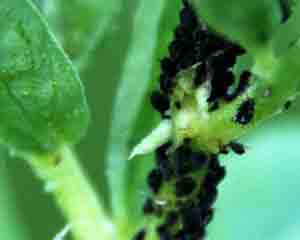Beans (Phaseoleae)
→ Legumes (Faboideae)

|
|
Seeding: from end of February to end of May (Where winters are particularly mild (e.g.
in England) broad beans are sown in autumn as a winter crop.)
|

|
|
Planting: May
|

|
|
Distance: 50.0 cm x 10.0 – 15.00 cm
|

|
|
Height: 50 – 150 cm
|

|
|
Harvest: If sown: 9 weeks after seeding, if planted: from June to August. Not before June and not after August
|

|
|
Habitat: sunny, sheltered habitat
|

|
|
Good Neighbours: Asparagus, Beetroot, Black salsify, Celery, Chinese cabbage, Courgette, Kohlrabi, Muskmelons, Potatoes, Radish, Radish, Rhubarb, Salad, Spinach, Tomatoes, Turnips, Watermelons, Winter purslane
|

|
|
Bad Neighbours: Bush beans, Fennel, Garlic, Leeks, Onions, Peas, Spring onions, Strawberries
|

|
|
Warning: Its pollen is poisonous. Wearing a
mask is important.
|

|
|
Your need: One person consumes an average of 700 g a year.
|
|
|
|
Require an average level of nutrients
|

|
|
Order at
poetschke.de,
tomgarten.de,
obi.de,
obi.at
|
Properties
(No User Tips)
Broad beans are annuals which grow to a height of 0.3 to 2 metres.
They are both used as animal feed as well as being eaten by humans and are also grown as "green manure".
Habitat
(No User Tips)
They need a sunny location with heavy, loamy soil.
Propagation
(No User Tips)
Broad beans are propagated generatively via seeds.
Good Neighbours
(No User Tips)
Asparagus, Beetroot, Black salsify, Celery, Chinese cabbage, Courgette, Kohlrabi, Muskmelons, Potatoes, Radish, Radish, Rhubarb, Salad, Spinach, Tomatoes, Turnips, Watermelons, Winter purslane
Bad Successors
(No User Tips)
The following plants should not be planted in the following years:
Winter Protection
(No User Tips)
Where winters are particularly mild, cover the broad beans e.g. with 10 cm of soil and a fleece.
Cultivation
(No User Tips)
- Do not use
any manure just before sowing
- Water regularly, avoid
standing water (they need a lot of water).
- Mulch to keep the soil moist.
- Earth up the soil.
- Its pollen is poisonous. Wearing a mask is important.
Deseases / pests
(No User Tips)

Pests: Aphids
Control: Natural enemies: Introduce ladybirds and green lacewing larvae.
Brush down the plants / spray with a solution of water, soft soap and rectified spirit or of milk and water.
Diseases: Chocolate spot disease (small brown spots about 5 mm large on the leaves, discoloured stripes on the
stalks), fungal infections (most frequently broad
bean rust)
Control:
Use fungicides permitted for private use
such as can be found in the database of the German Federal Office for Consumer Protection and Food Safety.
Harvest
(No User Tips)
The beans are harvested when ripe, but still slightly soft and milky.
Storage
(No User Tips)
Fresh whole broad bean pods will keep in the fridge for 3 to 4 days.
Blanching briefly will make them keep a
little longer.
Tip:
Do not keep the beans close to
ripe fruit (e.g. apples or pears) or tomatoes.
Preparation
(No User Tips)
It is best to use them fresh. Uncooked, or (rarely) even cooked broad beans as well as the pollen are poisonous (see Wikipedia)
Your need
(No User Tips)
One person consumes an average of 700 g a year.
Not necessarily needed
Location of your garden:
(Unknown Address)